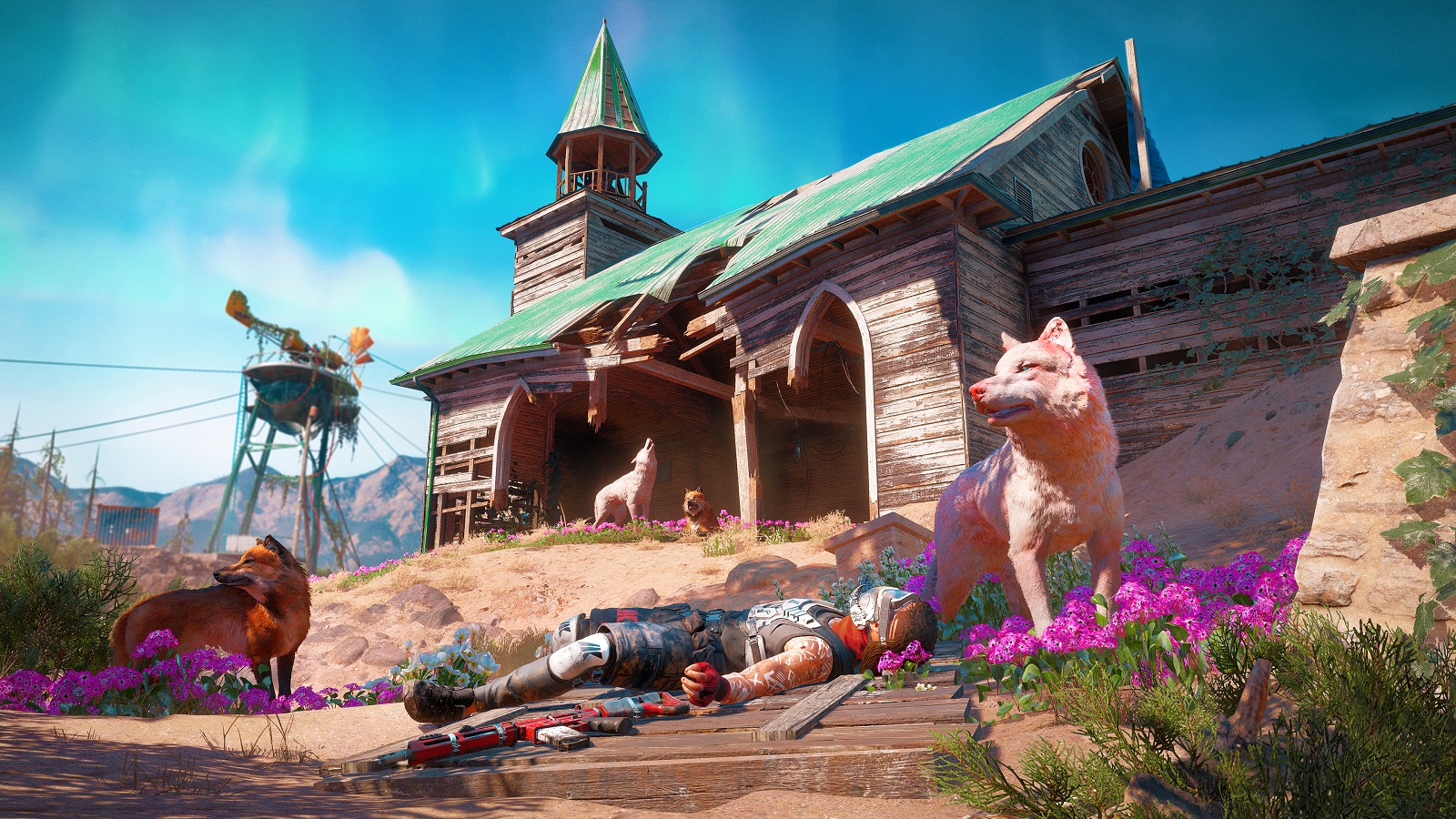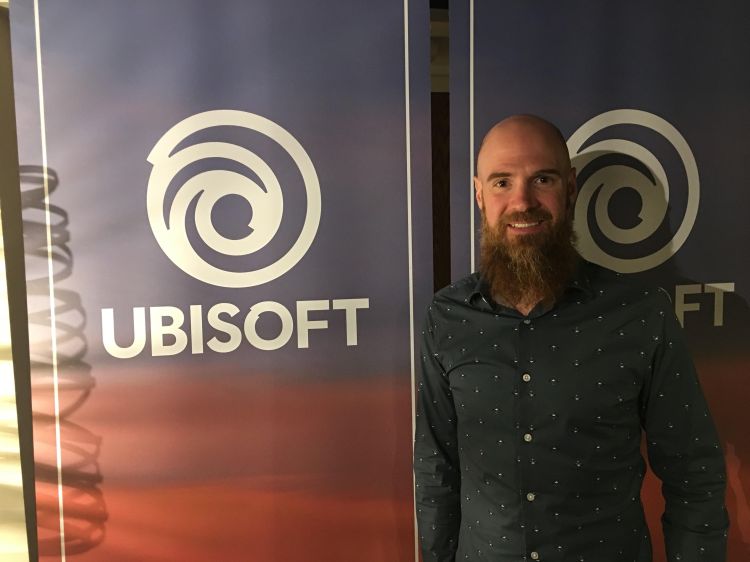Darryl Long can’t make his Ultima IV, his favorite game from his formative days. So he works on artificial intelligence and cloud computing to help other Ubisoft Entertainment designers and developers make their Ultima IV.
Long is the managing director of Ubisoft Winnipeg, which the French publisher opened last year. Winnipeg is a sort of headquarters for the company’s artificial intelligence and cloud computing efforts. These technologies help Ubisoft use its 32 studios across the world — as one of its comms reps told me, the sun never sets on Ubisoft — to work on massive game worlds such as Assassin’s Creed: Odyssey and live-service online games such as The Division II.
The AI helps free up animators and artists to do more than work on patches of grass and other mundane tasks. You can designate an area and set boundaries, and the AI will fill it in with grass and trees that look as if an artist had created it — and use foliage that fits the terrain and environmental conditions, even erosion. Or someone at Ubisoft Bucharest can work on a scene, and another designer in Montreal can look at the material as the Romanian studio continues to produce it.
I found this fascinating, and Long walked me through a few of the basics behind Winnipeg’s work at a Game Developers Conference 2019 meeting. Here is an edited transcript of our interview.
June 5th: The AI Audit in NYC
Join us next week in NYC to engage with top executive leaders, delving into strategies for auditing AI models to ensure fairness, optimal performance, and ethical compliance across diverse organizations. Secure your attendance for this exclusive invite-only event.
A far cry from before
GameBeat: You talked about procedural algorithms. Looking at the most recent games Ubisoft has put out, what can you point to where you used a procedural algorithm to do a certain thing?
Darryl Long: The best example I can give is Far Cry 5, because I produced Far Cry 5. I just came over recently. There’s a gentleman named Etienne Carrier. He did a presentation at GDC last year, specifically on this topic. The biggest one I could point you at is the vegetation in our worlds. Back on previous Far Cry games, we had a system to place trees and bushes and all that in the world, and then we added the ability to place rocks and have that be decoration for the forest. The artists needed to draw the boundaries of that region by hand. It was a lot of work. What we did is we automated that using procedural algorithms. We would take the terrain of the world and simulate how much light it gets, how much moisture it gets, what the temperature gradients are like, things like that, and find out what kinds of trees would grow there, what kinds of bushes and grass and whatever. And then figure out how much they would grow, even, in that location. Something with a lot of wind, the trees don’t grow very high. The vegetation in Far Cry 5, the vast majority of it was build through a procedural algorithm following those rules.
GamesBeat: So for example, here’s a meadow, and the algorithm would know that the grass would grow so high and the trees would be this tall depending on how the wind comes down the mountain to the west.
Long: Absolutely. Even further than that, it would decide where the meadow should go sometimes.
GamesBeat: Based on the terrain of the area?
Long: It could be that. It could be — on the sides of these mountains in Montana, the grasslands tend to run down the peak of the erosion along the side of the mountain. Then the trees grow more in the valleys in between those. It’s rules that are programmed into the procedural algorithm, and then it knows these things and it generates terrain. It’s strong enough that it can keep them fresh and make sure it doesn’t feel repetitive.
GamesBeat: Would this also apply to Far Cry: New Dawn.
Long: I didn’t work on New Dawn, but we would absolutely — at Ubisoft, we want to make sure we’re not reinventing the wheel all the time. Of course we want to pass technology on from one game to the next.
GamesBeat: Say 10 years ago, you’d have a team of artists making this by hand. Not even talking about doing the boundaries for the algorithm, but making it all by hand.
Long: Back on a game like — I’m trying to go back far enough to remember what I was working on. It never got released, but there was a game that I worked on 15 or 16 years ago. When we make grass, we’re not actually placing every single blade of grass specifically, but we do grass cards, is what we call them. The grass cards were all placed by hand. An artist would say, I’ll put a grass card here, a grass card there, and do a meadow that way. It took an incredible amount of time, and of course that limits the size of the world we can do. Nobody’s going to want to create 16 meadows every day.

Above: This church has gone to the dogs.
GamesBeat: And it limits what else those artists can be doing.
Long: Absolutely. I’d much rather that an artist was building a new mission or something like that than placing blades of grass. It’s about empowering our creators. If an artist can click a button and have grass everywhere, and then decide how they want to shape that grass and give a certain feel to it afterward, that’s a tool that adds value. That enhances the game they can make. If we can create tools that allow them to say, “I want a house,” and they click a button and get a house, already built and filled with beds and tables and televisions and all that stuff, then they can customize it. They can go in and tell a story. That’s something I believe artists can do, but that machines will never be able to do: to tell a story. Put the soul into a creation that makes it really special and memorable for the player. When you walk into an environment, into a house or a building or something that’s been crafted in a game, you immediately and unconsciously pick up on the story being told in that scene. I don’t believe it’s machines that can do that for us. It’s artists.
GamesBeat: That also gives you the time and the resources to talk to these geologists and meteorologists and herbalists to tell you how these things behave in nature.
Long: For me, that was one of the great things about Far Cry 5. Doing that kind of research allowed us to connect with people who understand how the world works and reflect that in the game. We had people come to us and say: I grew up in Montana, and this feels like home.

